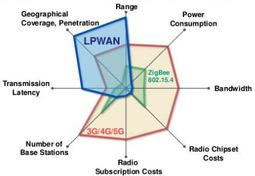Telegram Splitting Multiple Access (TSMA) in Mioty: How It Works & Advantages
Advertisement
Telegram Splitting Multiple Access (TSMA) is the core communication method used in Mioty technology, designed to improve reliability, scalability, and interference resilience in Low Power Wide Area Networks (LPWANs).
TSMA achieves this by splitting a data packet (telegram) into multiple smaller sub-packets, which are then transmitted over different frequencies and at staggered times across the network. This approach ensures that even if some sub-packets are lost due to interference or noise, the original message can still be reconstructed using the remaining sub-packets.
In this article, we will explore how TSMA works and its key advantages in enhancing Mioty technology’s performance.
How TSMA Works?
Following are the generic steps applied in TSMA.
- Telegram Splitting: The original message (telegram) is divided into smaller sub-packets. Each sub-packet contains redundant and encoded information for error correction.
- Time and Frequency Diversity: Sub-packets are transmitted at different times and over varying frequencies, creating a diverse transmission environment. This minimizes the impact of interference or collisions within a crowded RF spectrum.
- Reception and Reconstruction: The receiving base station collects as many sub-packets as possible. Even if some sub-packets are lost or corrupted, the base station uses error correction algorithms to reconstruct the original message.
- Interference Mitigation: The asynchronous and distributed transmission approach ensures that collisions or interference only affect individual sub-packets, not the entire message.
Advantages of TSMA
Following are some of the benefits of TSMA technique used in Mioty technology.
- TSMA ensures that the original message can be reconstructed even in noisy environments, providing robust communication.
- Splitting the message over time and frequency makes it less vulnerable to interference and multipath fading.
- Supports a large number of devices transmitting simultaneously without significant degradation in performance.
- TSMA is optimized for low power consumption, allowing devices to operate for extended periods on small batteries.
- By spreading transmissions over multiple frequencies and times, TSMA uses the spectrum efficiently and avoids congestion.
Comparison with Traditional Access Methods
Following table summarizes differences between TSMA used in Mioty with ALOHA technique used traditional LPWAN.
| Feature | TSMA | ALOHA |
|---|---|---|
| Packet Handling | Splits data into sub-packets for distributed transmission. | Sends entire packets in a single transmission. |
| Interference Tolerance | High, due to time and frequency diversity. | Lower, as packet collisions are more frequent. |
| Energy Efficiency | Optimized for long battery life. | May require more retransmissions, increasing power usage. |
| Scalability | Supports millions of messages per day. | Limited by network capacity and collision rates. |
Conclusion
TSMA is a game changing protocol that empowers Mioty technology to excel in modern IoT networks. Its ability to split telegrams into sub-packets, coupled with interference resilience and scalability, makes it a robust choice for diverse applications.
Reference
- Refer Moity Alliance, Website : https://mioty-alliance.com/ for more information.
Advertisement
 RF
RF


